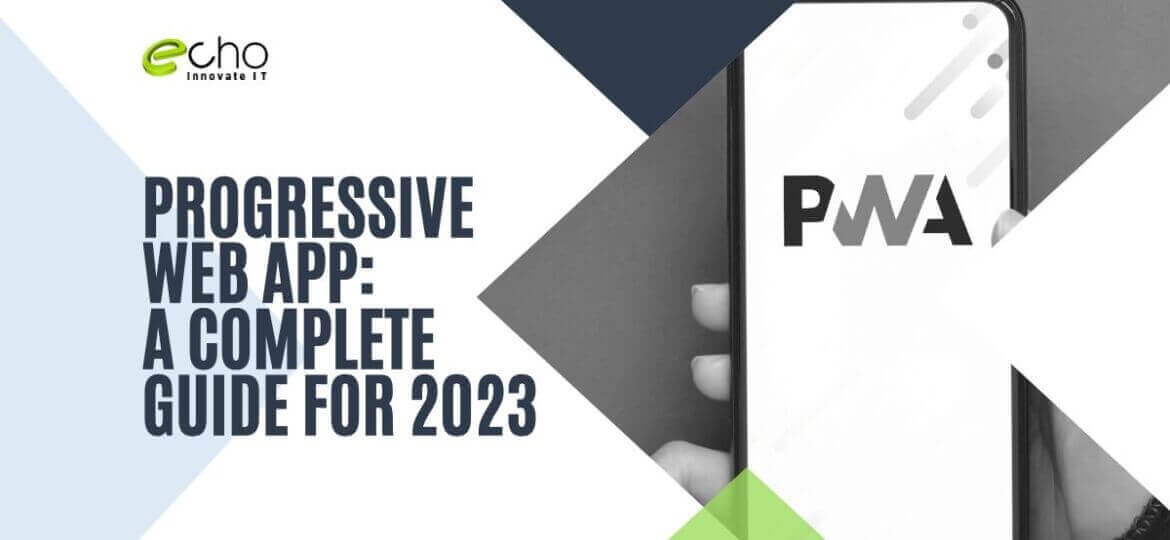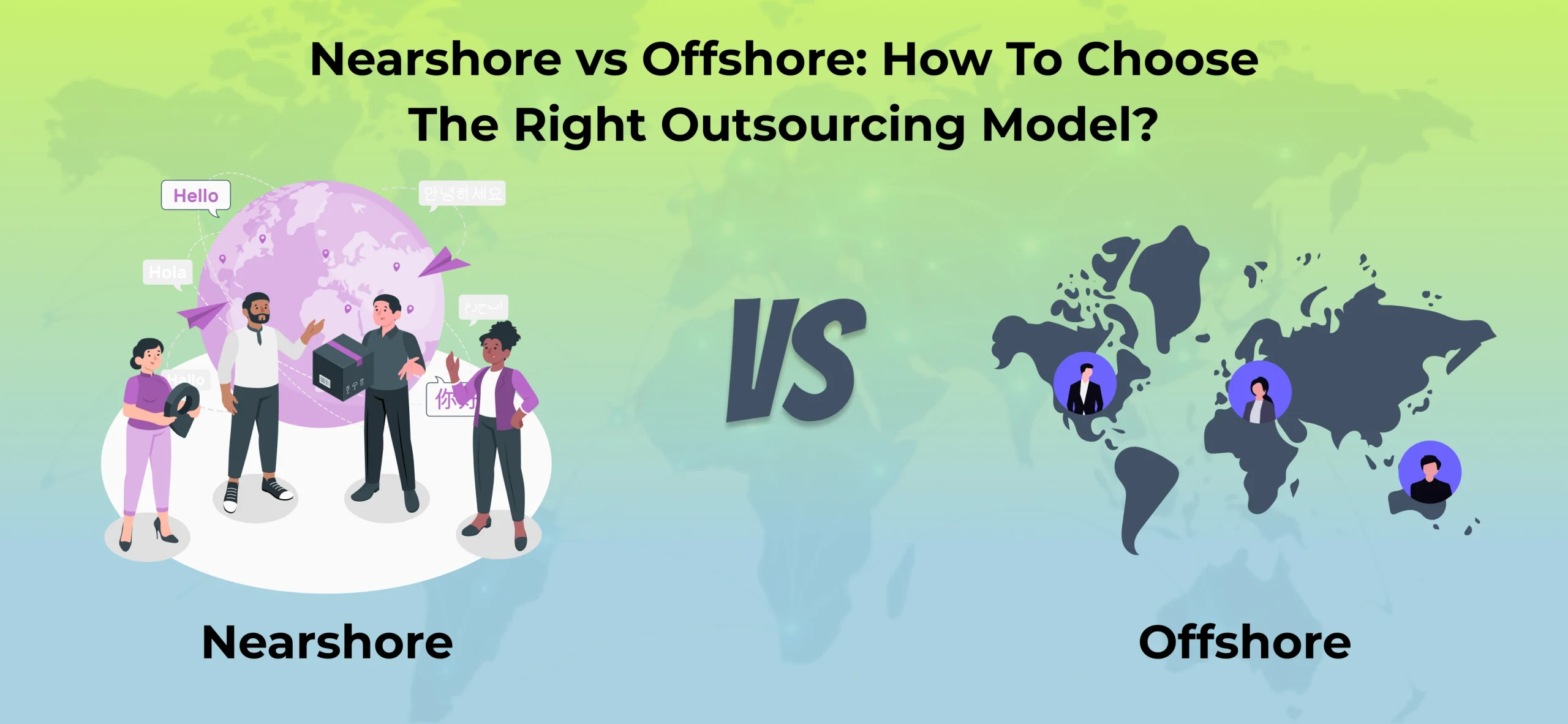With more than 5.3 billion mobile users worldwide, it was important for businesses to make it simple for clients to shop on their phones. As a result, they developed applications that enabled customers to buy while on the go; these apps were a significant advance over mobile sites.
People eventually become dissatisfied with only using smartphone applications. Using an app requires going to the app store, giving up some storage space on the phone, waiting for it to load, and then dealing with a cluttered update process. And now, Progressive Web Programs are in the limelight as a viable alternative to conventional, memory-hogging apps.
This blog will provide an in-depth understanding of what Progressive Web App is, why it is valid, and how it operates.
What Is Progressive Web App?
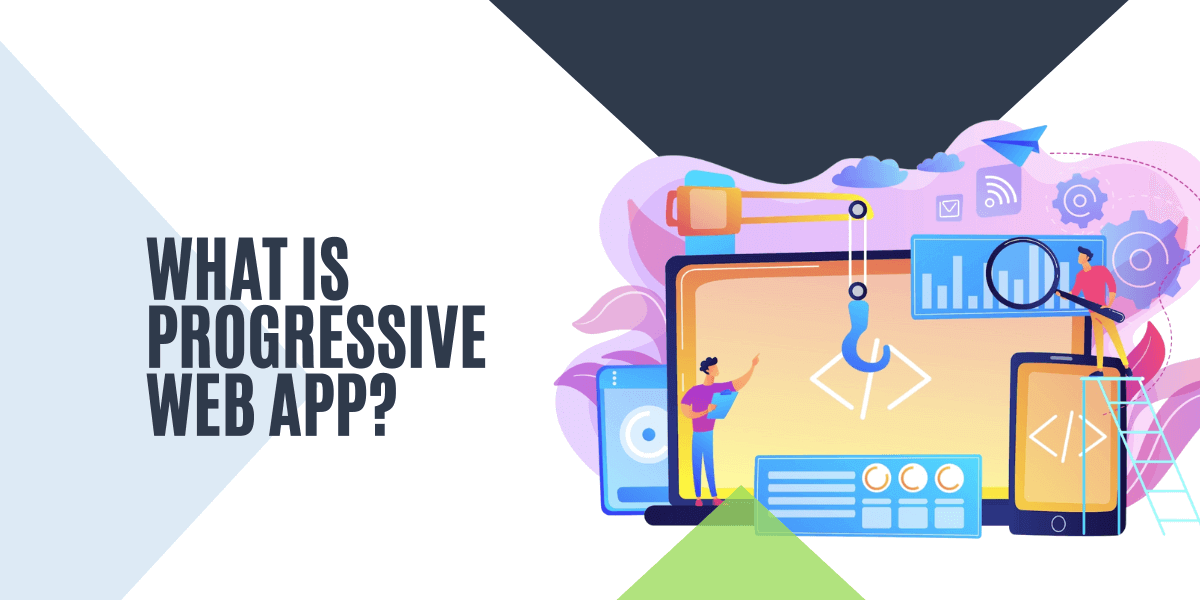
A Progressive Web App (PWA) is a web app that tries to replicate the behavior of a native app. They’re designed for quick loads, push alerts, and use while offline or with poor network access. PWAs are similar to native applications in that they may be installed on a user’s device. However, they are developed using standard web technologies like HTML, CSS, and JavaScript.
As a result, consumers no longer need to download an app from an app store. Also, PWAs are more accessible and more straightforward to produce than native applications. PWAs provide the conveniences of a native app while still being accessible through a web browser. To close the gap between native applications and the web, PWA strives to provide a unified and consistent user experience. With PWAs, business owners can avoid the battle of choosing between a native app vs hybrid app.
Web App Manifest
The Web App Manifest is a JSON file that gives developers command over their app’s presentation and behavior. They may hide the URL bar and make it a full-screen app. It also provides a convenient location for users to keep track of their app’s information, such as its starting point and name. You may use this video as a jumping-off point for setting up your new app on any computer or mobile device, which is the film’s primary purpose.
Push notifications
Re-engaging customers is easy with push notifications, which provide information and real-time updates straight to their mobile devices. A progressive web app can still deliver push notifications even if the browser is closed and the program isn’t operating in the background.
Service Worker
A service worker is a component of a progressive web app (PWA) that ensures the program continues to operate even when the user isn’t connected to the internet or has a spotty connection. This is achieved by background network synchronization and continued update alerts even while the user’s browser is closed. In contrast to conventional JavaScript files, which may be used in several contexts, a service worker operates in isolation from the web page or app and is created to handle one event.
Offline mode of work
The service worker enables offline mode by caching the application shell, reducing load time for subsequent visits. Refreshing dynamic information such as message history and shopping carts once an internet connection is restored. This improves app speed and provides a more satisfying user experience. Messages may be sent and received, and conversation logs can be accessed, regardless of whether the user is connected to the internet.
Transport Layer Security
An encryption protocol suite, Transport Layer Security (TLS), safeguards data in transit across a network. PWAs ensure the security of your data transfer by using the Transport Layer Security (TLS) protocol. Having an SSL certificate installed on your server and serving the webpage through HTTPS can do this.
Application Shell Architecture
Server-side technologies like the Application Shell Architecture (ASA) streamline the mundane work of making a business app architecture. Building and sustaining the Progressive web app calls for a combination of content-type separation and structured-based architectural principles. The app shell design is the only viable option for creating PWAs that can run on many platforms (the base of the UI).
The essential parts of an app’s layout that allow it to function offline are known as its “shell” (due to unstable or slow network connections, for example). This design idea may work particularly well for single-page applications written in JavaScript or DHTML.
Customer Satisfaction
Fast page loads, offline functionality, and push notifications are just a few features that PWAs attempt to bring to the web to mimic the experience of native apps. It closes the gap between native applications and conventional web apps by providing a more consistent and integrated user experience.
Development
As PWAs are built using standard web technologies like HTML, CSS, and JavaScript, PWAs are more quickly and cheaply created than their native app counterparts. Since PWAs can be viewed directly in a web browser, consumers no longer need to download the app from an app store.
Cost
Because they don’t need to be rewritten for each platform. Progressive Web Apps may be substantially less expensive to create than native applications (iOS, Android, etc.). Thus, business owners can create more web apps to make money cost-effectively.
Reachability
PWAs increase their potential audience since they can use PWAs on any device with a web browser. The requirement to create several versions of an app for various platforms is reduced, expanding the app’s potential user base.
Optimization for Search Engines (SEO):
Progressive Web Apps can be optimized for search engines in the same way that any other website may be. If done correctly, this may boost the app’s discoverability and bring in additional users naturally.
Get New Users
Like a regular app, PWAs may be found, shared online, and installed on a user’s device. Having more users and keeping them engaged may boost conversion rates and income.
Mobile Phones
PWAs aim to improve the user experience on mobile devices, where people are increasingly consuming content. It may help companies connect with mobile consumers, who are becoming more challenging to reach via desktop web applications.
Improvement in UI/UX
Improved user interface and user experience are critical in today’s competitive digital market. Progressive Web Apps (PWAs) are web-based applications that have the feel and appearance of mobile apps. This can be done while also using web technologies to mimic the performance and features of native mobile apps, such as access to the app’s data store, without the need for a complete rewrite.
The result is an improved user experience with responsive layouts and pushes alerts, as in a native mobile app. The other features, such as offline access, background syncing, and gaming engine compatibility, make them appealing to consumers. Because of all its benefits, PWAs are popular on both the App Store and the Google Play Store.
Fast and Responsive
PWAs load quickly and function well on all devices, and they can be rapidly downloaded by anybody who uses Android or iOS. The only thing you need to do is look for them in a web browser or download shop. There is no setup required. Users can add a PWA to the home screen by dragging and dropping it there in Microsoft Edge or Safari.
Data security
PWA ensures user data protection and reduces any security breaches. Web Bluetooth technology is used in these implementations because of its safety features. With a PWA, users can access their apps fast and confidently exchange private data without worrying about security risks.
Automatic updates
PWA automatically updates with little involvement from the user. This is helpful since it may be challenging to keep up with the latest versions of all your applications. When you return to the app, they will have been updated automatically. It eliminates the need for customers to reinstall applications or download extensive upgrades repeatedly. And since they’re entirely browser-based, they provide you with a fresh interface with no additional effort, so you can spend more time on what counts.
How Do PWAs Work To Ensure Better Management Of Businesses?
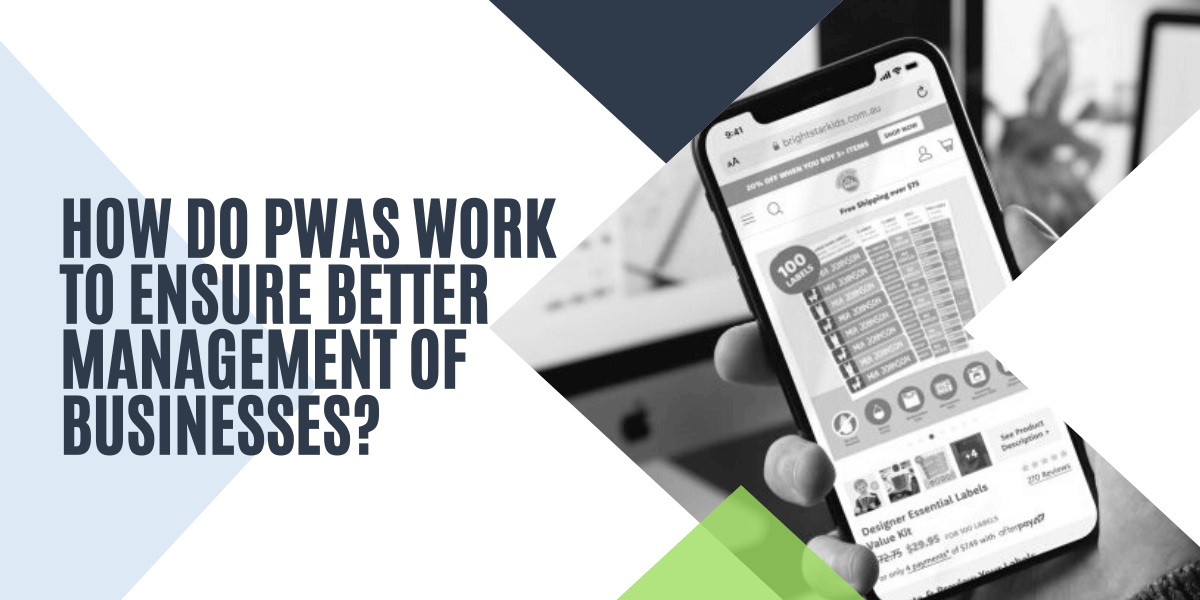
Other elements of the modern web used by PWA include web push notifications and the possibility to install the app on the user’s device. The PWA, once installed, may be accessed directly from the home screen, eliminating the need to go to the browser. The technology underpinning PWAs is based on using up-to-date browser APIs like the Service Worker API and the Cache API to provide offline functionality and quick load times. The functionality of these APIs lies in the fact that they let the PWA store assets and data locally, hence minimizing the amount of data that must be downloaded during future visits.
When Should You Think Of Using PWAs For Your Business?
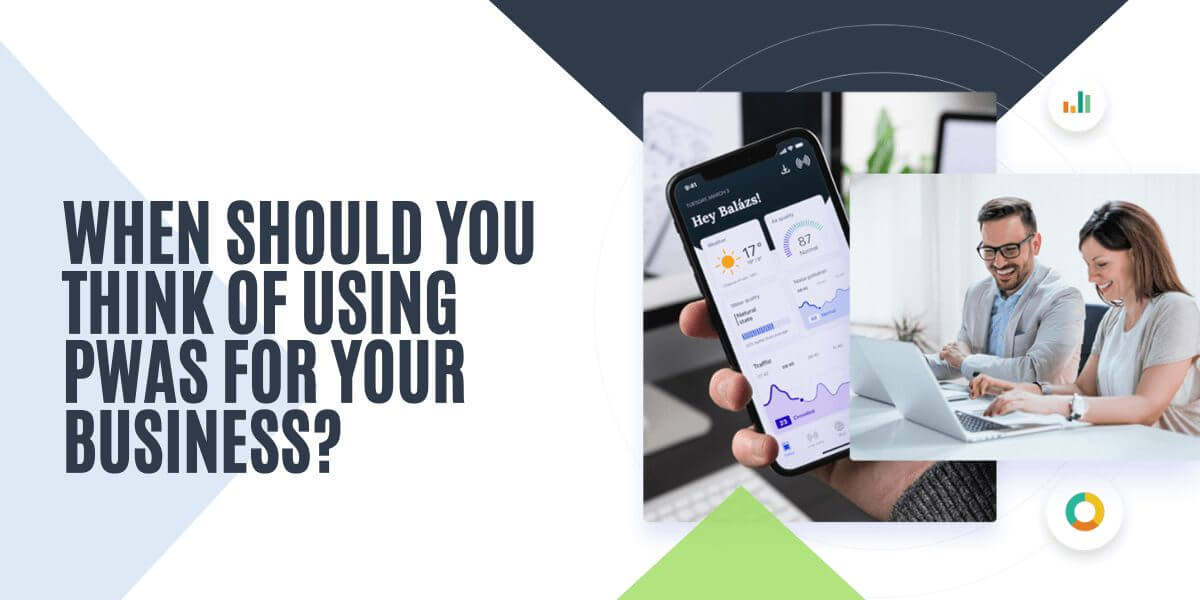
- Since people can use Progressive Web Apps from any device with a web browser, they are great for spreading to many people. Many people nowadays would rather not have to download and install applications on their devices, including those who don't have access to native app stores.
- PWAs may provide a more streamlined, dependable, and exciting user experience than conventional web pages. They can function without an internet connection, may be placed on the user's home screen, and send push alerts.
- Portable web applications (PWAs) save money in the long run since they are easier to create and keep updated. They can be approved by app stores and may be updated online, sparing consumers the trouble of constantly downloading new versions.
- Search engine optimization (SEO) is enhanced for PWA since they may be indexed via a URL and are more discoverable.
- E-commerce websites benefit significantly from PWAs since they provide customers with a more streamlined and efficient shopping experience while increasing conversion rates.
Therefore, a PWA may be the best option if you want to attract a large audience, enhance the user experience, save expenses, and boost your SEO. Remember that PWAs are still developing, so they may only work as intended or perform optimally on some devices or browsers.
Conclusion
In the following years, progressive web apps (PWAs) will determine the direction of mobile app development. Now is the time to investigate the possibilities, adopt the technology for your company, and join the elite ranks, as many of the most successful businesses are already doing. Compared to the expense and limitations of deploying native applications, the adaptability and inexpensive maintenance requirements of PWAs allow them to increase conversions, revenue, and overall business success across a wide range of industries and niches.
If you are looking for a top Java web app development company for your project, you can hire web developers from Echoinnovate IT. We provide custom PWA development services at affordable rates. Reach out to us at Info@echoinnovateit.com to get a free consultation or a quote.
FAQs Of Progressive Web App
When it comes to browsers and devices, do they all support PWAs?
Google Chrome, Microsoft Edge, Apple Safari, and Mozilla Firefox are some of the latest browsers compatible with PWAs. However, browser and device compatibility might affect the availability of services like push notifications and offline functionality. Your PWA should be tested across various browsers and operating systems to guarantee compatibility and a smooth user experience.
To what extent might Progressive Web Apps contribute to a company's success?
Most businesses that use PWAs see significant revenue and cost savings, improved user engagement, faster page loads, and decreased data usage. Furthermore, PWA technology aids organizations in attracting up to 10x more users, which translates to more revenue.
Should an e-commerce site use PWA?
With their superior approach to enhancing the online shopping experience, PWAs are quickly becoming the norm in the e-commerce sector.
What are some benefits of using a PWA?
Using a PWA has several advantages, including increased exposure, enhanced usability, reduced overhead, enhanced crawl ability, improved offline accessibility, and enhanced search engine optimization. With a PWA, visitors may expect quicker page loads and a more exciting experience.
In what ways do advanced web applications differ from their native counterparts?
Users need not download or update PWAs from an app store, yet they nevertheless provide many of the same features as native applications. Because they work in any browser, PWAs are a great way to reach a bigger audience. They use fewer resources to create and keep running than native programs.
